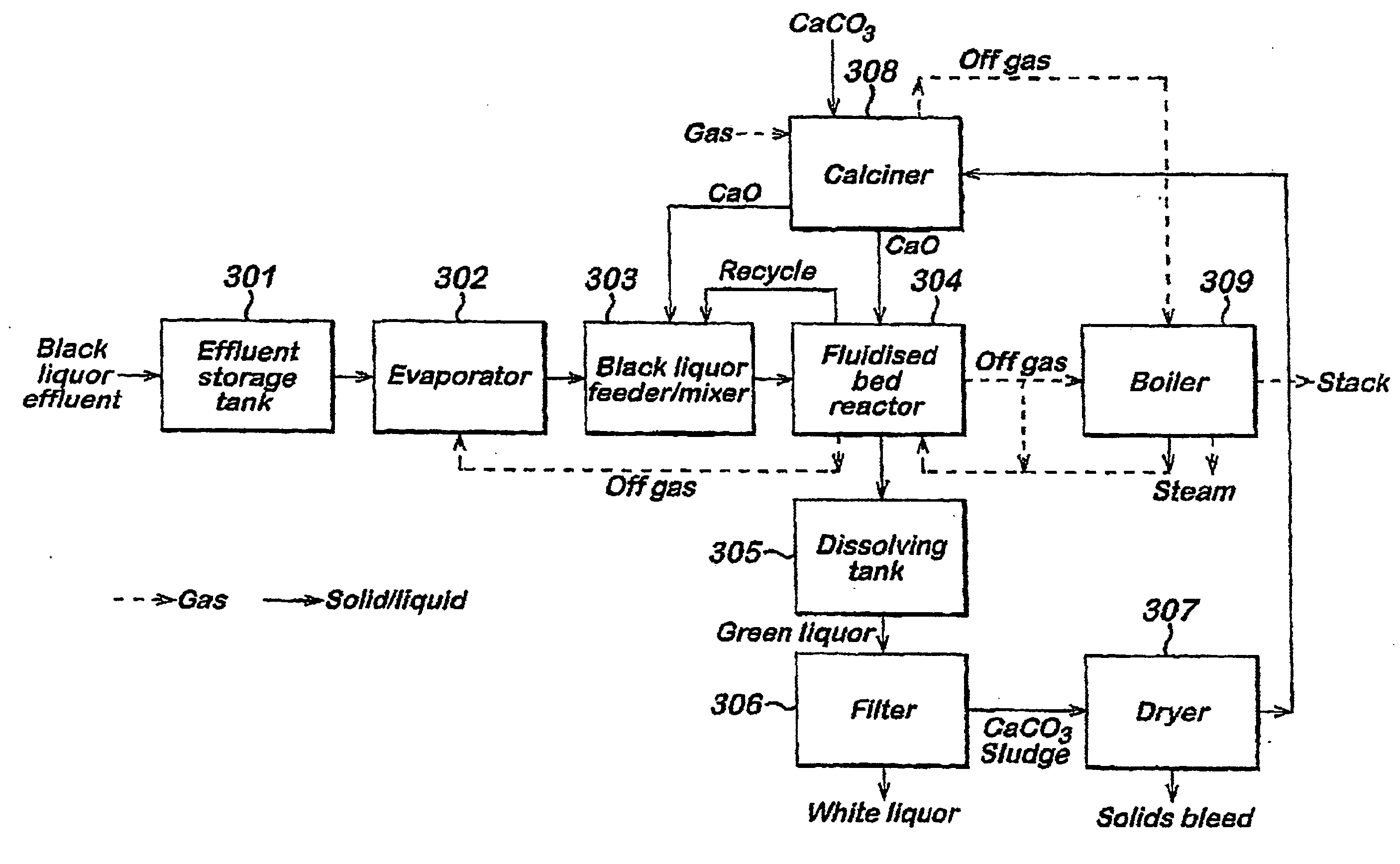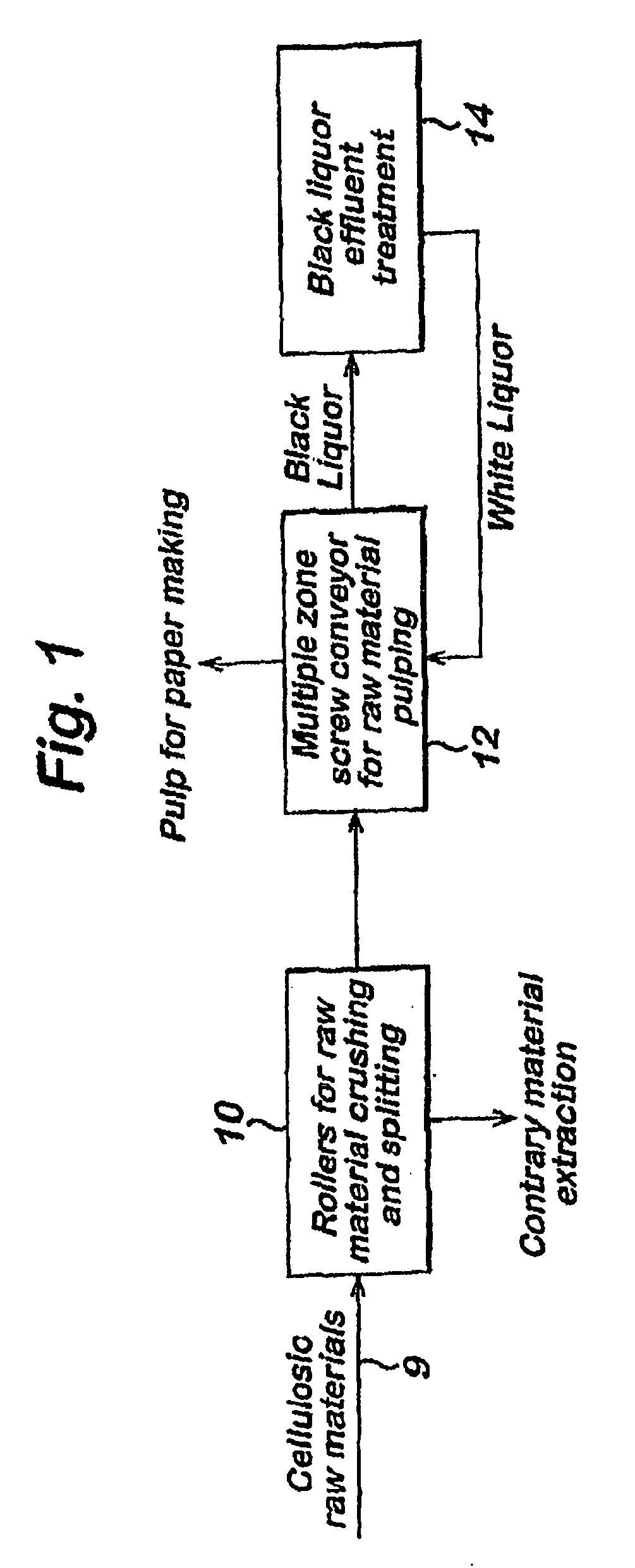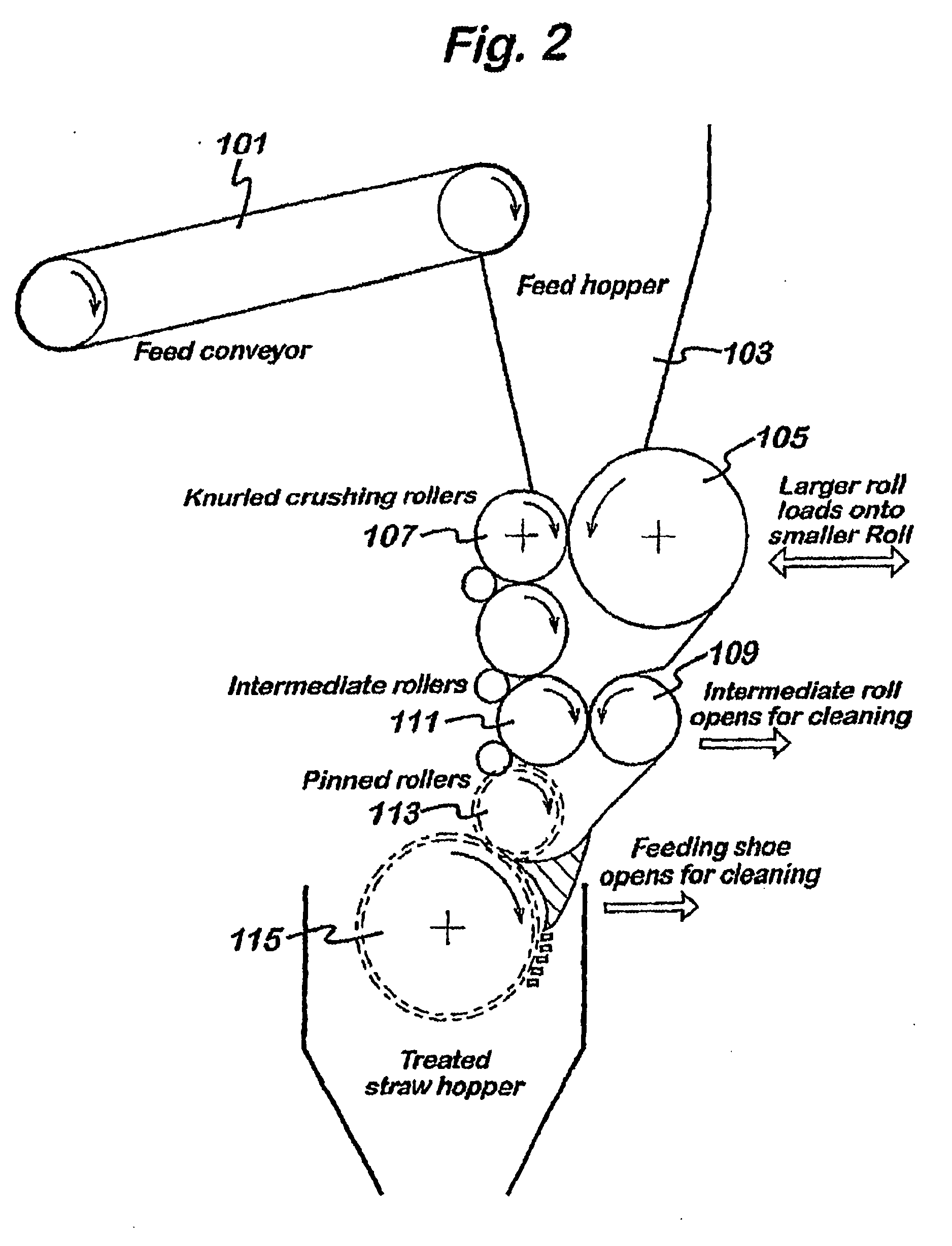Methods for producing pulp and treating black liquor
a technology of pulp and black liquor, which is applied in the field of methods for producing pulp and treating black liquor, can solve the problems of increasing the emission of sodium salt, excessive fouling of the steam pipes in the upper part of the furnace, and the technology currently used to treat black liquor effluent, etc., and achieves enhanced reaction rate, increased throughput, and high reaction temperature
- Summary
- Abstract
- Description
- Claims
- Application Information
AI Technical Summary
Benefits of technology
Problems solved by technology
Method used
Image
Examples
Embodiment Construction
Overview of the Treatment of Wheat or Rice Straw
[0049] The present process will be described, by way of illustration with reference to the treatment of wheat straw, which is usually chopped before pulping and which contains nodes within the stem that usually remain intact if straw is chopped before pulping. This is a serious drawback in the production of quality paper pulp with the resulting poor quality paper being produced. A method is therefore preferably employed which crushes the nodes, opens out the straw stem lengthways in a gentle fashion and feeds the raw material into a digester in a positive, metered and continuous process. The straw to be treated passes from a delivery conveyor 9 to a straw pre-treatment station 10 where the stems are crushed between rollers, contrary material is extracted, and the stems are split longitudinally. The conditioned straw is then supplied to a digesting or pulping station 12 where it is subjected to mechanical work in the presence of aqueo...
PUM
| Property | Measurement | Unit |
|---|---|---|
| temperature | aaaaa | aaaaa |
| mean particle size | aaaaa | aaaaa |
| mean particle size | aaaaa | aaaaa |
Abstract
Description
Claims
Application Information
 Login to View More
Login to View More - R&D
- Intellectual Property
- Life Sciences
- Materials
- Tech Scout
- Unparalleled Data Quality
- Higher Quality Content
- 60% Fewer Hallucinations
Browse by: Latest US Patents, China's latest patents, Technical Efficacy Thesaurus, Application Domain, Technology Topic, Popular Technical Reports.
© 2025 PatSnap. All rights reserved.Legal|Privacy policy|Modern Slavery Act Transparency Statement|Sitemap|About US| Contact US: help@patsnap.com



